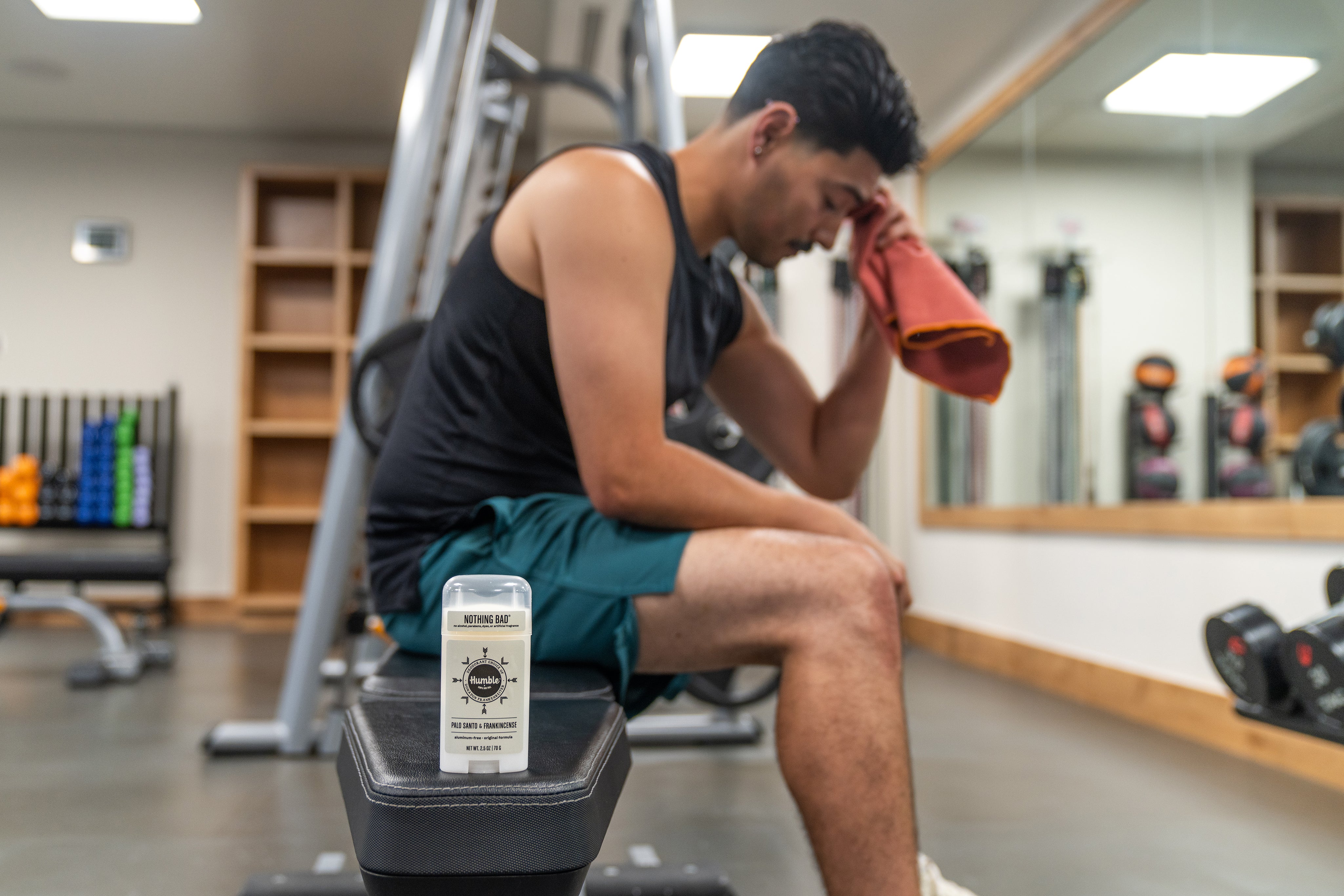Let’s address the elephant in the room. Plastic. Can’t live with it, can’t live without it—for now anyway. In the meantime, there are many things we can do to educate ourselves about the different plastics in our midst and ways we can reduce what ends up in landfills.
Plastic’s impact on our environment is in the hands of both manufacturers and consumers. Only together can we address the issues that plastic creates and come up with a reasonable and repeatable plan for the future. 
Plastics 101
Invented in the early 20th century, synthetic polymers were quickly adopted as a miraculous material derived from crude oil and natural gasses. Plastic is often the choice material for our food and beverage packaging, toys, computers, and beyond. It’s relatively inexpensive to manufacture, durable, and extremely versatile.What’s Wrong with Plastic?
Plastic production increases exponentially each year, with no sign of slowing. It’s part of the fabric (often literally!) of modern industry and society. While plastic has, in many ways, improved life and enabled advances in areas from technology to medicine, there are downsides to the material that was heralded as a miracle just decades ago.Plastic is derived from fossil fuels and often contains harmful chemicals, such as BPA, phthalates, and dioxins. Lack of compostability, improper recycling, and an inability to recycle in some cases means plastic has a tricky end of life. Once produced, it’s basically here to stay. So it’s in our hands to ensure we do our best to manage what happens after we use plastic products.

Recycling Plastic
Plastic is the packaging of choice for most household products, but it is one of the most challenging to recycle. Some containers can be easily recycled, while others are not.To make matters more complicated, every region across the country has a different set of recycling guidelines due to the difference in the capabilities of municipal recycling plants. So, what you can recycle in one county can be much different from what you can recycle in the county next door. The remedy? Know your recycling provider’s guidelines for what’s in and what’s out.
What do those numbers mean on plastics?
Many recycling centers follow a system to know what they can and can't process. Most plastics are marked with a symbol, numbers, and/or letters. You may have to angle a plastic container in the light just right to see the tiny embossed markings called resin identification codes. They’re hard to see, but they serve an important purpose. These numbers help recycling plants identify different types of plastics, what they can process, and how they should be sorted.Common plastics & their numbers:
Plastic Number 1
This type of plastic is often accompanied by the acronyms PET or PETE, which stand for polyethylene terephthalate. PET #1 is probably the most common household plastic as it is used by food and beverage manufacturers. Think water bottles, nut butter containers, sauce squeeze bottles, and the like. PET #1 is brand new or “virgin” plastic. It’s never been recycled. So, this is the stuff that’s adding plastic to our landscape, but it is also the most widely accepted by recyclers for recycling.Plastic Number 2
Plastic that’s noted with a 2 and HDPE or high density polyethylene, is also a virgin plastic, but it’s designed for a different purpose and thus manufactured to be tougher than PET #1. This type of plastic is commonly used for milk jugs, laundry detergent, shampoo bottles, and many deodorant tubes.Plastic Number 3
You may be familiar with PVC (like the pipe), which stands for polyvinyl chloride. But it’s also the stuff that plastic food wrap, cooking oil bottles, and many kids toys are made out of. It’s also super toxic thanks to the materials used to make it, and not super recyclable.Plastic Number 4
The counterpart to HDPE is LDPE or low density polyethylene. This can be made into thin, flexy plastic like plastic grocery bags, bread bags, and those huge dry cleaning bags. There are facilities that are now recycling LDPE into innovative building materials like plastic lumber and floor tiles, but it’s not yet ubiquitously recycling-friendly. LDPE plastics can, however, be safely and easily reused.Plastic Number 5
PP or polypropylene is a tough but lightweight plastic that is heat resistant and a good barrier to grease. It’s what straws, chip bags, and yogurt containers are made of. Our plastic deodorant containers are made of this. It is recyclable, but not yet widely accepted by recycling plants across the country. Check with your local provider to see if it’s accepted. It’s one that is often mistaken for being the same as PET #1.Plastic Number 6
If you love takeout, you’ve no doubt enjoyed your delicious food out of a styrofoam clamshell. Styrofoam is a form of polystyrene. Polystyrene is a chosen material for one-and-done food containers and utensils. It’s cheap to produce and breaks down quickly. This type of plastic is one of the most common and the most harmful to our planet. It accounts for over a third of the stuff that’s in landfills, and contains chemicals that can cause some pretty nasty health problems in humans. Heating this material (say, in your microwave) is not advised.Plastic Number 7
This is the catchall category affectionately known as “other”. It includes BPA, Polycarbonate, and LEXAN, as well as bioplastics, like PLA . Many plastics in this category, like BPA, are harmful. Despite this knowledge, these plastics are still used in baby bottles and children’s cups and plates. #7 plastics generally can’t be recycled because of the catchall status, though some like PLA, which is made from polylactic acid from corn or tapioca, are biodegradable. We are hopeful that the future holds more innovation in bioplastics.While these numbers are a helpful guide for recycling plants, they are not always indicative of what you can put in your recycling bin. It’s best to confirm with your local recycling service provider what they’re currently taking.

A Case for Alternative Personal Care Packaging
As technology advances and we all become more aware of the impact manufacturing and consumerism have on our planet, we’re seeing amazing new options for packaging emerge. Just as importantly, we’re seeing more consumers seek out products packaged in more eco-friendly materials.We want sustainable materials to go mainstream. A major inhibiting factor for adoption is cost. The more consumers are open to and seek out alternatively packaged products, the more manufacturers will opt for these packaging solutions helping to drive the costs down for all parties.
For small businesses like our own, we are working to find a balance between meeting consumer expectations, managing costs, and doing what’s best for the Earth.
What is PCR, and how is it different?
PCR stands for post-consumer recycled or post-consumer resin. PCR plastics give a second life to plastic already in circulation. PCR plastics are a great option for personal care products.Humble Brands’ PCR Packaging
From the beginning, working with sustainably sourced, simple ingredients has been a non-starter for us. Thankfully, we have been able to build relationships and gain access to incredible ingredients that meet our standards.For packaging, our dream has always been to eventually eliminate our use of virgin plastic all together. We are working diligently toward this goal. Here’s where we stand:
Plastic free deodorant: Our top 5 scents are available in plastic-free packaging, made with naturally biodegradable plant fibers and free of conventional plastics.
Deodorant: Our full-sized deodorant sticks are made from 75% PCR polypropylene (PP) material. That’s 15% more post-consumer resin than the industry standard.
By using plastic deodorant containers that are made with 75% PCR material, we’re preventing more than 4 tons of virgin plastic from entering circulation every month.
Bar soap: Our cleansing bars are in a 100% recyclable box made from 100% post-consumer waste.
Lip balm: Currently in 32% PCR packaging. We plan to introduce a fully plastic-free container in 2022.
The Takeaway
Whew. If you’re feeling overwhelmed and unsure where to go next, here are our quick tips for how you can become a savvy, eco-aware consumer:- Be Selective: Take a moment to do some quick research on the brands you’re choosing to support. Do they have a sustainability mission? What kind of awareness do they have about their impact on the environment and the end of life of their products?
- Be Reasonable: ‘Doing your part’ looks different for everyone. Ditching plastic altogether can be cost-prohibitive as many of the alternatively packaged products are more expensive. Decide what fits your budget and personal sustainability standards.
- Reduce: The first of the 3 Rs. Using less is perhaps the easiest and best way to make a positive impact. And you can start small. For example, use fewer swipes of your deodorant each morning. Don’t reapply in the afternoon. Keep a spoon handy to dig out every little bit of deodorant from the tube.
- Reuse: Perhaps reusing your deodorant or lip balm containers doesn’t make sense, but look for other household containers you can give another life to. Keep peanut butter containers to sort and store Legos. Reuse sriracha bottles for dish soap or to mix homemade cleaning solutions. And if you do come up with a clever way to reuse your deodorant containers, let us know!
- Recycle, properly: Learn your local recycling program’s guidelines. Don’t be a recycling contaminator, putting things in your recycling bin that can’t be processed at your local plant. While it’s not common, there are some areas where you can disassemble your deodorant containers and successfully recycle each piece.




